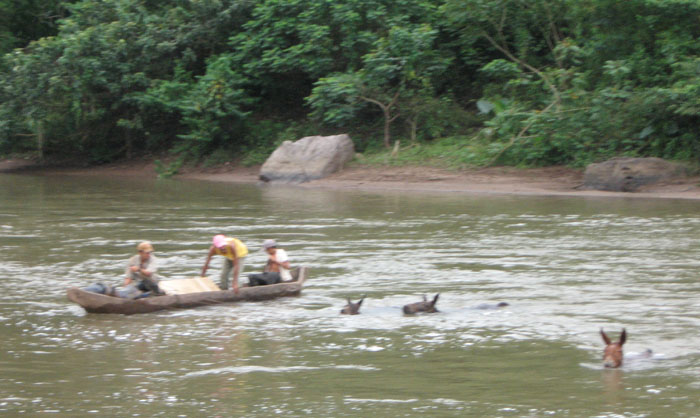The new Sandinista government in Nicaragua has restarted the literacy program that they had been running until the Contra War put a stop to that work, as well as many of the other social programs instituted after the revolution in 1979. The plan of the Ministry of Education is to bring the literacy rate from the current 70% up to over 95% in the next few years. Since the Nicaraguan campesinos (peasants) work all day, the literacy classes have to take place in the evening. Most of the rural schools in the country are miles from the utility grid (as are most of the houses in the countryside) so part of the program is to put solar powered lights in every school that is off the grid, 924 in all.
With financial help from the Dutch government, the ¾ of a million dollar project of solar powering every rural school in the country is now underway and Suni Solar, the commercial arm of the Nicaraguan Grupo Fenix I work with, has received the contract to do the installations of almost 1000 small 100 watt photovoltaic systems in the schools (some get more than one system). This is a massive undertaking for such a small group but we are dealing with it like a military campaign. The Ministry of Education person in charge of the Program meets periodically with Rodolfo and Douglas, the two heads of Suni Solar, and they lay maps out on a large table, planning the routes of the eight teams that are now out in the countryside.
These teams are installing about 3 systems each per day and the logistics of supplying all the PV modules, batteries, control panels, wiring, compact fluorescent lights, etc. is quite a challenge. The living room of my little apartment upstairs from the Suni headquarters in our barrio is packed with control panel kits and just about every day a truck leaves loaded with materials to where particular teams are at the end of that day. The teams of four people normally camp out in the last school they worked in that day and my other bed room was filled with surplus sleeping bags left over from the Contra War.( I noticed that the US army sleeping bags were better quality than the Soviet ones).
After the first month, the easier to get to schools are all finished and now the interesting work is beginning. One team is going down the Rio San Juan that is (more or less still in debate) the boundary between Nicaragua and Costa Rica. Thay are carrying enough materials to install systems in 60 schools on the way to Greytown (San Juan del Norte) on the Caribbean Coast.
Photo: Richard KompLoading one of the trucks with PV modules and other supplies to install about 50 systems.
After El Castillo, the road completely disappears so they did the rest of the trip floating downstream in a boat to get to the remaining 20 or so schools. They are going up small tributaries in dugout canoes in an area of rainforest completely without roads. Other teams are working in the rugged mountains and carrying kits of solar parts and equipment on burros and horses, or in oxcarts. Several of the teams are carrying cameras and I hope to have photographs for a longer story later on. The Miskito Coast area is going to be another challenge to get around in, mostly by sailboat and dugout canoe; but I have already seen the Cuban textbooks prepared specifically for the Miskito language that were used back in the early 80s and will be put to use again.
Photo: Douglas Gonzalez
One of the installation teams crosses the Rio Coco in a dugout canoe full of PV modules.
The pack mules are swimming, since they don't like to ride in canoes.
The ferrying took several trips to get all the batteries and heavy supplies across.
There is also a new monument in the little park right next our barrio which commemorates the “Heroes and Martyrs of the Literacy Program”. During the war here, the Contras specifically targeted the group of young teenaged high school students who went out into the countryside to teach the campesinos how to read and write (using the textbooks developed for Nicaragua by the Cuban government). Banana republic dictators don’t like their people too educated or literate; and the names of the 58 martyrs, 19 of them high school girls are listed on the monument. However, there are some happier stories that came out of this effort. When we were visiting small remote villages installing community PV systems, I have met several women who went to the village as a student-teacher and fell in love with one of the students they were teaching. Some of them are grandmothers by now, still living happily in their adapted village.
Maybe this new literacy program will have such long lasting results as well as finishing the job of education that was interrupted so many years ago.
